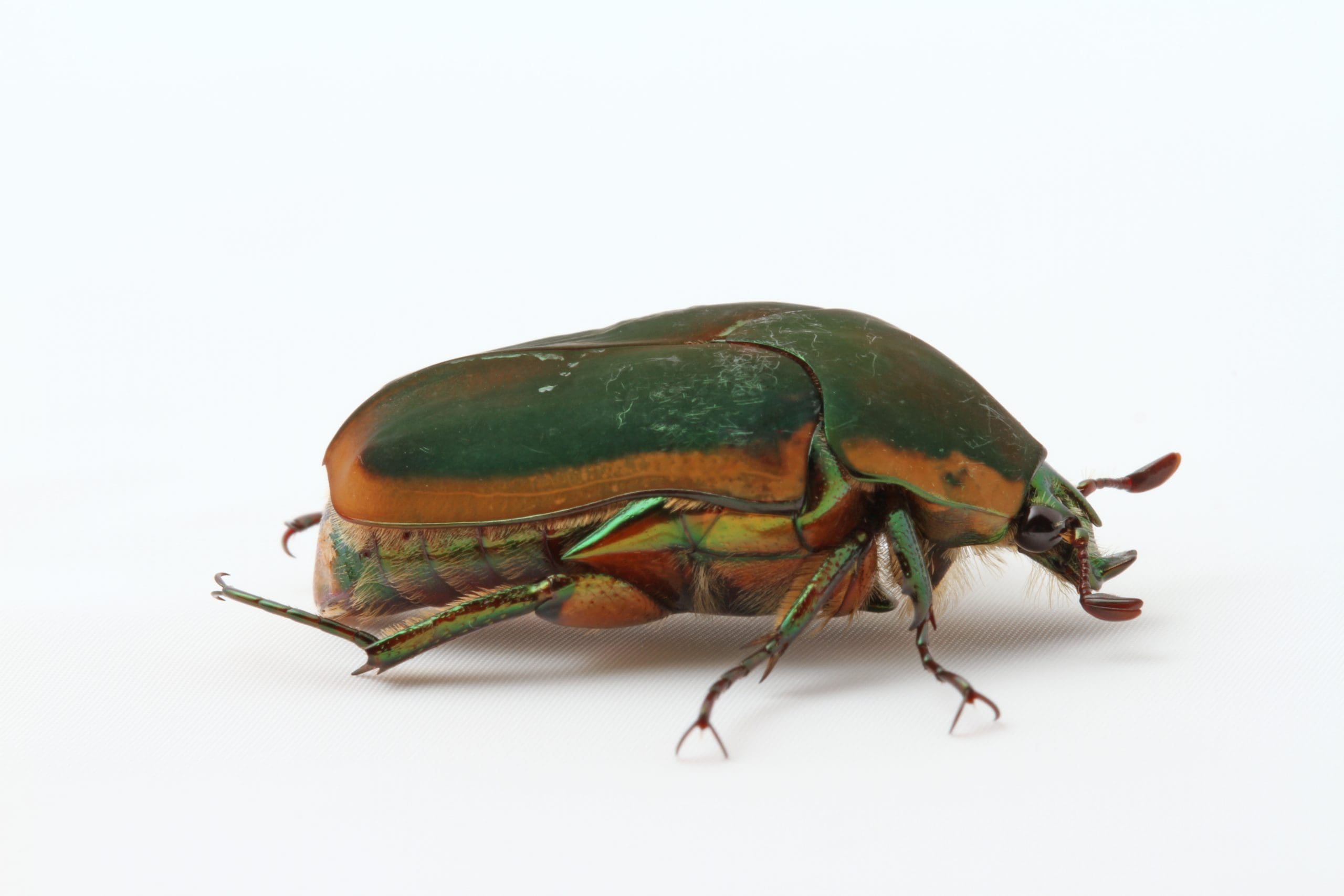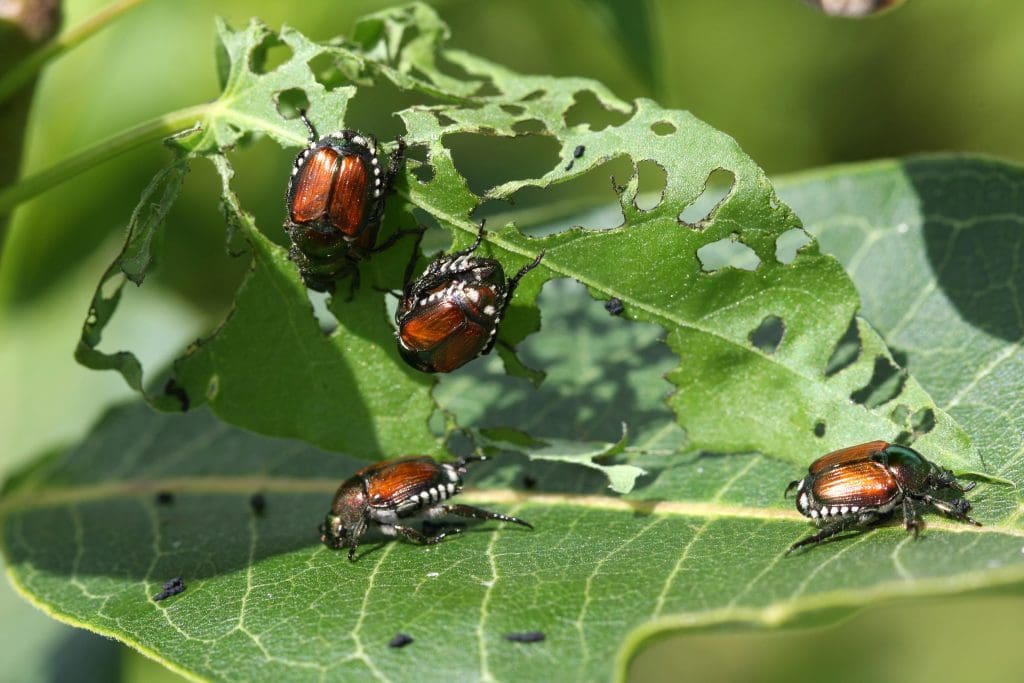
If you have clients complaining about June bugs, you’re probably going to need them to get more specific or conduct a site visit yourself as the common name ‘June bug’ can refer to a number of different species of beetles in the genus Phyllophaga.
Some of the most common beetles to be dubbed June bugs include the tenlined beetle, green fruit beetle, green June bug, European chafer, and Japanese beetle. Depending on which of these beetles your customers are dealing with will help you determine if they’re actually a problem that needs treating.
Identifying The Species
The tenlined beetle (Polyphylla decemlineata) is the largest June bug measuring up to an inch and half in length. This beetle is brown and has ten distinctive white stripes running down its body. It’s most commonly found west of the Rocky Mountains.
Green fruit beetles (Cotinis mutabilis) have a metallic green color and are established across the eastern U.S. They can be found on ripe fruits like figs, plums and peaches.
Green June bugs (Cotinis nitida) have dull, metallic green wings with golden sides and the head, legs and underside are very bright shiny green. European chafer (Rhizotrogus majalis) is a tan-brown color and half an inch long.
The adults of these species are most active before or after sunset in May or June, hence the collective June bug name. They are attracted to lights and can be a nuisance as they bump into doors and windows, but they aren’t a major threat.
Japanese beetles (Popillia japonica) are smaller than some of the other species, being half an inch in length. They have mid-brown wings and a metallic green-blue head. These insects are active during the day.
Destructiveness
Adult June bugs can be bothersome but don’t tend to cause much damage. It is their white grub larvae that they lay in the soil that are the true issue. These grubs feed on grass, broadleaf weed, tree and shrub roots as they mature.

Initial symptoms of grub damage can be mistaken for drought stress, including yellowing and wilting of foliage, as well as stunting of plants. If there is a high population of grubs in turfgrass, discolored patches of loosely rooted turf can appear in mid- to late-summer. Skunks and raccoons can also dig for these grubs, damaging the lawn further.
While Japanese beetles sometimes get lumped in with the June bug term, they are far more destructive than the other listed beetles. They are a pest during both their larval and adult stages. Their grub forms feed on roots, while in their adult stage, they feast on over 300 crops and flowers. They will chew the tissue between leaf veins, leaving a lace-like skeleton. They prefer raspberries, grapes, beans and roses.
The attractiveness of plants as food for adult Japanese beetles varies during the summer. They will feed on low-growing plants after emergence and eventually move to fruit and shade trees. When the leaves become older and tougher, they will return to low-growing succulent foliage.
Control Methods
Often June bug larvae populations are localized, so control is rarely warranted unless there is a history of damage in the area. If chemical insecticides are warranted, a number of contact insecticides will control adult June beetles, including carbaryl, cyfluthrin, lambda-cyhalothrin, and others. Timing is critical for effective control.
Preventive applications should be made prior to the eggs being laid in areas that have a history of grub infestations. Curative treatments should be applied when grubs are feeding near the soil surface from August to October and again in April through early May.
Maintaining plant health and vigor through proper irrigation, fertilization, and other practices can help also minimize the impacts of damage from June bugs.
As for controlling Japanese beetles, look for these bugs in late June and early July and start management early on. Damage leaves attract more of these beetles. Most feeding is finished by mid to late August. If only a small number are present, hand-picking the Japanese beetles and putting them in a bucket of soapy water will suffice.
Avoid using traps as this can attract more Japanese beetles to a property. Nematodes, parasites and milky spore are all biological controls available, with varying levels of effectiveness. It is discouraged to use insecticides on flowering plants that Japanese beetles are feeding on because of the hazards to pollinators.

